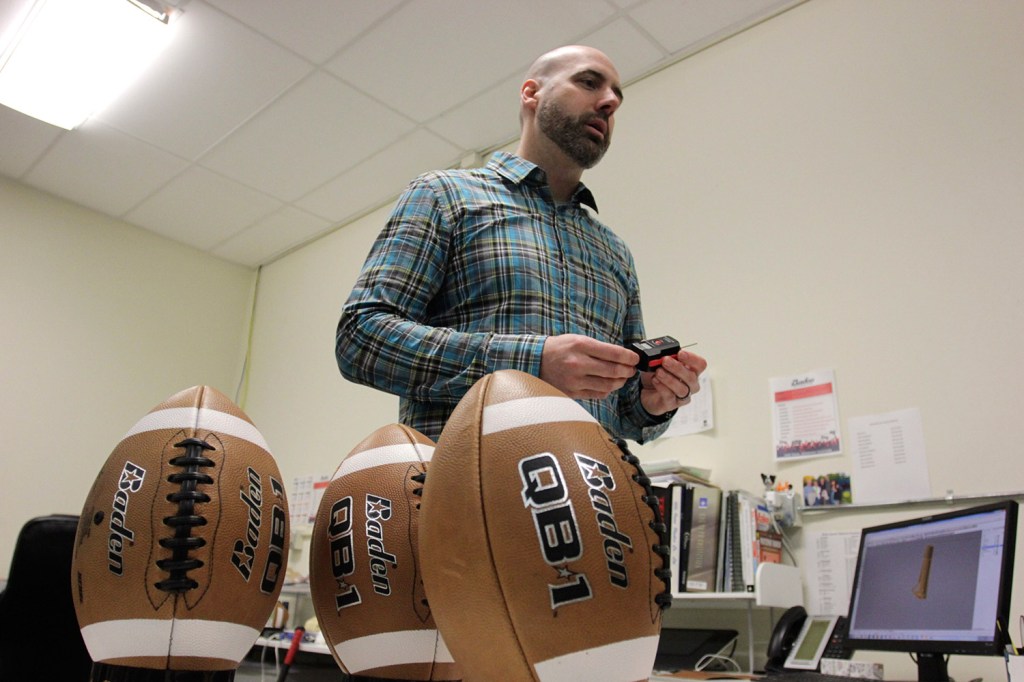FOXBOROUGH, Mass. — The NFL says it is still investigating how the New England Patriots used underinflated balls in its last game but has no conclusions yet and no timetable for resolving the cheating accusations with the Super Bowl nine days away.
The league said Friday that evidence shows the Patriots used underinflated footballs during the first half of the AFC championship game Sunday night against the Indianapolis Colts.
It issued a statement that the Patriots have pledged full cooperation and have given the league information it requested and made personnel available upon request. Quarterback Tom Brady said Thursday afternoon he had not been contacted at that point.
The NFL says it expects full cooperation from other clubs and has hired an investigatory company to help in reviewing electronic and video information.
The league also said when it is able to come to conclusions, they will be shared publicly.
But what advantages does a deflated football hold for a team? Former NFL quarterback Hugh Millen, who played two seasons for the New England Patriots and now helps design footballs for manufacturer Baden, Washington, explains.
ADVANTAGES OF DEFLATION
NFL rules mandate that a ball must be inflated between 12.5 and 13.5 pounds per square inch. But a football deflated a couple of pounds below the range is softer, allowing for better grip, Millen said.
“If you’re going to be challenged to handle the ball in either very cold conditions or wet conditions, then having the ability to grab the ball and squeeze it, you’re going to have more of a chance to remain in contact with the ball,” he said.
Deflated balls could also mean faster balls thrown by quarterbacks. Because of the softer grip, the index finger remains on the football a tad longer, allowing for faster spirals during a throw, especially for quarterbacks who like to keep their fingers on the seams, Millen said.
“We know from having put a football in wind tunnels, the faster the ball rotates, the more it cuts through the air. It has less drag, therefore more velocity on the ball,” he said, adding later, “most quarterbacks like to have less air than more air.”
HOW COULD THE REFEREES MISS IT?
Referees inspect game balls about two hours before the game, checking the air pressure among other standards. NFL guidelines are clear: a football cannot be tampered with after the pre-game inspection.
While veteran officials could probably feel a difference between a properly inflated ball and a deflated one, referees aren’t thinking about ball air pressure during the game since they’ve already checked them, Millen said. They’re busy trying to move the game along.
“If they’re not of a mindset to check the ball, they’re not engaging their senses,” Millen said, adding that some may be wearing gloves.
POSSIBLE EXPLANATIONS
In his years in the NFL, Millen said it was common for quarterbacks to ask for balls to be deflated, within the league’s acceptable range, if the footballs felt too hard for their preference. It takes just a couple of seconds to lose 2 pounds of air pressure after inserting a needle. A team equipment staffer could have been careless.
“I’ve seen somebody say, ‘Hey, stick a needle in there for a second just to get the air right,'” Millen said.
Another possible reason: footballs can sometimes leak air. Millen said all football manufacturers produce balls that lose air pressure without tampering. But he adds that would be an easy possibility to test.
Copy the Story LinkSend questions/comments to the editors.



Success. Please wait for the page to reload. If the page does not reload within 5 seconds, please refresh the page.
Enter your email and password to access comments.
Hi, to comment on stories you must . This profile is in addition to your subscription and website login.
Already have a commenting profile? .
Invalid username/password.
Please check your email to confirm and complete your registration.
Only subscribers are eligible to post comments. Please subscribe or login first for digital access. Here’s why.
Use the form below to reset your password. When you've submitted your account email, we will send an email with a reset code.